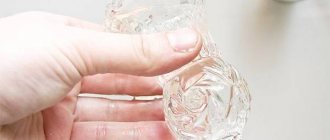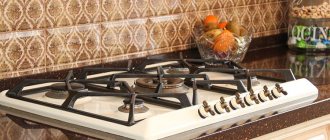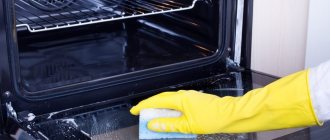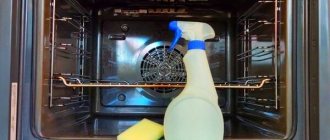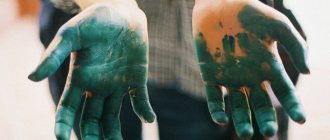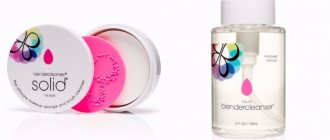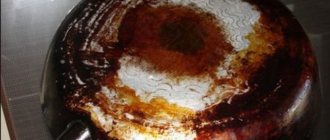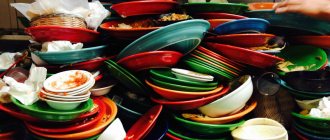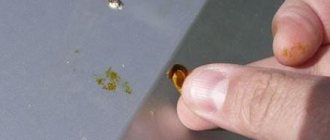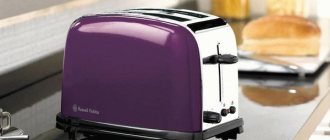Every housewife always has dishes made of glass in her arsenal. These are all kinds of jars for storing bulk products or canning, trays and heat-resistant baking dishes. All of them, regardless of their purpose, have one very unpleasant property - getting dirty.
Limescale deposits from water often remain on jars. Grease marks and soot congeal on oven cookware. To get rid of such contaminants, you should use the proven advice of our grandmothers and mothers.
To make glassware sparkle clean and surprise with its perfect transparency without drips or streaks, you should try preparing special compositions with your own hands. They are absolutely safe for the health of household members and have repeatedly proven their effectiveness in practice.
Let's look at the most common and effective options. With them, glassware for baking or preserving will always look spotlessly clean and sparkling.
Soaking in hot water
Instead of vigorously scrubbing the glass mold, it is better to let the carbon deposits dissolve on their own. The dishes are immersed in hot water. After 25–30 minutes, carbon deposits can be easily removed with a wooden spatula. If after the first soaking the result is unsatisfactory, the procedure is repeated. The method works better if you add dishwashing detergent to the water.
Folk remedies
You can clean glass objects until they shine using folk remedies:
- Mustard. Dilute 2 tablespoons of dry mustard in a bowl of water and soak the items. Or dilute with hot water and rub the glass with this paste. Rinse thoroughly with clean water. Mustard will cope with fresh stains.
- Soda. It will help to wash dishes from major contaminants. Apply a little baking soda to a damp sponge and rub into the prepared dishes. Clean until shiny, rinse with water.
- Vinegar. Even removes carbon deposits formed from heating. Take 1 tbsp. l. table vinegar per 1 liter of water, soak contaminated items for 20 minutes.
- Salt. Items are soaked in a salty solution and dried naturally. Or the contaminated areas are moistened, sprinkled with salt, left until the plaque softens, then wiped with a sponge.
In addition to the listed home recipes, laundry soap shows excellent results. A solution is prepared with it or the glass is cleaned with a soapy sponge.
Toothpaste and ammonia
This mixture easily copes with even a thick layer of carbon deposits and adds shine to the glass. To prepare a cleaning product, a little toothpaste or powder is mixed with a few drops of ammonia. The resulting slurry is applied to the contaminated surface and left for several minutes. The carbon deposits begin to gradually dissolve and are wiped off with a sponge. Then the dishes are washed in clean water.
How should you wash glassware?
If there are drops of fat, food residues in the grooves and even limescale deposits that noticeably spoil glassware, you can use one of the following remedies:
- Food foil and baby soap. Take a piece of food foil and crumple it thoroughly, turning it into a “metal sponge”. We place the glass item under running hot water and begin to scrub its surface with foil. After the desired result is achieved, rinse the product with very warm water mixed with shavings of baby soap. Rinse the dishes with a cool stream from the tap and rub with a linen cloth.
Tip: In order to clean products covered with old fat efficiently and without unnecessary fuss, you first need to roll them in fine table salt and leave for half an hour. After this, we remove the dirt from the surface mechanically and proceed to cleaning using one of the given methods.
- Mustard powder. We take warm water into a sink or basin and dilute 2 teaspoons of dry mustard powder in it. We prepare another basin with warm water. Soak glass objects in mustard solution for literally five minutes. We take them out one at a time and wipe them with a damp cloth, then rinse them in warm water. There is no need to wash things directly in mustard! If it was not possible to clear the dirt the first time, repeat the entire procedure from the beginning.
We recommend: What and how can you quickly and efficiently wash a grater?
- Ammonia. An effective way to rid glassware of drops and stains so that it sparkles and shines. Immediately before the items are used, soak them for one hour in a solution prepared from water and ammonia (a teaspoon of the product for every liter of water). After this, carefully wash with a soft cloth, wipe dry without rinsing, and expose to fresh air for half an hour.
- 9% vinegar. This method is best used immediately after using the dishes. Items should be cleaned of food debris and soaked in a sink with warm water and two tablespoons of 9% vinegar. For maximum effect, each product should be washed for at least a minute. Then rinse the dishes in clean water and dry.
- Baking soda. With its help, you can quickly clean massive products covered with stubborn stains. First, rinse it in warm water, then dip a damp cloth or sponge in soda and rub the surface for 1-2 minutes. Treated items should be washed first in warm, then in cold water.
- Crushed eggshells. With its help, you can easily wash the inside of glass household items with a narrow neck. We crush the washed and dried eggshells to a powder, pour them into dirty dishes, add a little water mixed with shavings of baby soap. We clamp the neck and thoroughly shake the object for several minutes. We rinse it with warm, then cold water. If necessary, repeat again.
- Potato chips. It can be used in the same way as in the previous method, or used for rubbing massive surfaces. The main thing is to wash with gentle movements without strong pressure and rinse the product thoroughly with cold water.
The above methods allow you not only to thoroughly wash glass utensils, but also to prevent the formation of chips, stains, and “rusty” stains on the surface.
We recommend: 6 effective methods to clean the grease filter from the hood
Features of cleaning baking trays made of modern materials
The finished product and folk recipes must be selected according to the type of material from which it is made. Some metals change color under the influence of aggressive components; they cannot be cleaned with ready-made products based on acids and alkalis. Non-stick coatings do not tolerate abrasives and hard metal wool and become unusable. New materials have appeared that require delicate handling.
You can use Coca Cola to clean the aluminum baking sheet.
Metal loses its luster when exposed to acid. The old oxide film is destroyed, and a new one is formed, rough and dark. How to clean an aluminum baking tray? By soft means. The container is filled with carbonated water. The carbon dioxide it contains destroys fat. When using Coca-Cola, the cleansing effect is enhanced. The metal does not react with mustard. Its cleaning properties have been known since ancient times. The following are used as soft abrasives:
- Coffee grounds are placed on the burnt areas and left for 2 hours;
- Soda, instead of water, add pharmacy hydrogen peroxide to it, make a paste;
- Coarse salt, when adding a few drops of water, the sharp edges dissolve and do not scrape the surface during cleaning.
It is better to wash off scraps from dishes with hot water. After this, the dishes are wiped dry.
You can use dish soap to clean the glass pan.
The dishwasher will handle it perfectly. Leftover food is pre-collected with paper. How to clean a baking sheet from carbon deposits yourself:
- Soak in a large container with dish soap. After a couple of hours, the glass will be easily washed;
- Cover the dry areas with baking powder and sprinkle with water. The released oxygen will bind drops of fat, the burn will become softer;
- The simplest method is to pour water into a container and place in a preheated oven for 10 minutes. After this, the increased humidity will cause the dirt to become soft.
Dry mustard will help clean the ceramic baking tray.
Fragile ceramics will deteriorate if abrasive products are used. You can use the same methods as for washing glassware. It is convenient to wash a greasy container using a slurry of dry mustard. You can wipe off carbon deposits after baking with a 3:1 mixture of baking soda and salt. Rub the container on both sides and leave it in the sink overnight. There will be no problems with washing in the morning.
Housewives of the older generation know how to clean a baking sheet from burnt fat without damaging the capricious enamel. Durable coating cracks at contrasting temperatures, chips form, and rust appears. Any food acids will help to cope with food and fat residues:
- 6% apple, wine, rice or regular vinegar;
- Lemon juice or sour citrus slices;
- Apple peel or juice pulp.
For an enamel baking sheet, you can use lemon slices.
Soda slaked in vinegar and Whiteness solution are effective (it is diluted 1:1 with warm water). First you need to remove all excess from the baking sheet with a wooden spatula.
Soft plastic and Teflon-coated containers using gentle methods using any non-aggressive dishwashing detergent. Pre-soaking is effective.
When choosing a product to clean a baking tray from carbon deposits, it is useful to remember folk recipes for detergents and the old proven method using silicate glue.
Baking soda will help get rid of carbon deposits.
Folk remedies
A popular and many-tested remedy is a mixture of soda and hydrogen peroxide. For the mixture you will need:
- ½ cup baking soda;
- 2 tbsp. l. hydrogen peroxide 0.05% concentration, it is sold in pharmacies;
- 1 tsp. regular detergent.
The components are mixed in porcelain or glass containers. Apply the finished mixture to the walls and bottom and leave for 20 minutes.
One of the most effective means for cleaning carbon deposits is laundry soap.
Composition based on laundry soap:
- Grind 1/3 of the piece on a grater;
- Add 1/3 cup of soda;
- Pour in 50 g of silicate glue;
- Add 0.5 liters of hot water.
The mixture is dissolved to a homogeneous viscous mass. It is used as a detergent for cleaning baking sheets after baking or cooking meat.
Baking soda is great for cleaning pots.
Household chemicals
How to clean a burnt baking sheet with detergent? Choose the right one that can cope with greasy deposits and burnt food residues. Universal products cope effectively with cleaning. They do not contain too many acids and alkalis, they contain PVA.
The compositions that are recommended for use on hobs and ovens are more aggressive. They should not be used for porous coatings or soft materials. They are ideal for glass and metal baking sheets.
We suggest you read: How to remove the smell of cat urine from the floor in an apartment
Don't rush to turn off the oven after cooking. It is enough to reduce the power to the boiling temperature of water. After the food is placed on plates, the baking sheet is filled ½ full with soda solution. Then place the container in the oven again and leave it on gentle operation for 20 minutes. After this procedure there will be no problems with cleaning. The stains will become soaked not only on the container, but also on the inner surface of the stove.
Another way to get rid of fat is to pour salt into the dishes. When heated, the carbon deposits will become soft, and the salt will adsorb old greasy stains.
It is better to wash off leftover food and fat immediately.
Before spraying compounds that destroy burnt fat, it is necessary, as far as possible, to remove the remnants of the cooked dish. Only then the dishes are sprayed with a spray bottle or applied with a special brush. The consumption and holding time of the product are determined according to the instructions.
After treatment, rinse thoroughly. It has been proven that rinsing dishes for 2 minutes does not completely remove detergent. It is better to leave it in the water for 15–20.
Tips for preventing grease from forming on the baking sheet surface
The easiest option to avoid problems with contamination is to use foil or special paper for baking. It is better to wash the baking sheet immediately after preparing the dish. If time is running out and you can’t wash the dishes on time, you should at least fill it with plain water.
One of the most effective means for cleaning carbon deposits is laundry soap.
Otherwise, you can choose one of the following methods to clean the pan. Don't forget about your hands; it is recommended to use gloves.
It is better to wash off leftover food and fat immediately. If time does not allow, you need to soak the dishes in hot water with added detergent.
Safety regulations
The housewife decides how to clean the baking sheet from the oven, focusing on the material from which it is made. Many people prefer aggressive products that easily destroy fat and other food debris. Household chemicals with a high content of acid and alkali must be used strictly according to the instructions.
Gloves are worn to protect the skin of your hands. They protect the skin from chemical burns. Fumes from using aggressive products are poisonous. In high concentrations they cause poisoning. The kitchen should be well ventilated. It is better to turn on the hood and open the window slightly to allow air flow.
If the protective layer is damaged, it is better to buy a new baking sheet.
Don't throw away the old baking sheet. This remedy will help bring him back to life!
Remember what your baking sheet looked like when you purchased it - it was probably shiny, smooth and beautiful. But, unfortunately, after a while the baking sheet, like other kitchen utensils, becomes covered with a dark layer of soot. It's incredibly difficult to clean.
There are many ways to give an old baking sheet new life. Of course, you can purchase special products. But, unfortunately, they do not always work, and they contain a lot of unnecessary chemicals. Therefore, we recommend that you try proven folk methods. They help get rid of even old carbon deposits and dirt.
How to Clean a Stainless Steel Pan
You will need
- 1 tbsp. l. hydrogen peroxide
- 2 tsp. baking soda
- sponge for washing dishes
Application
- Sprinkle the baking sheet with half of the prepared baking soda and pour hydrogen peroxide on top. Sprinkle with remaining baking soda again.
- Leave the pan for 1-2 hours.
- Rub the baking sheet well with a sponge.
How to clean an aluminum baking tray
You will need
- 2 tbsp. l. water
- 2 tbsp. l. distilled vinegar
- Bowl
- sponge for washing dishes
Application
- Combine water and white vinegar in a bowl.
- Place the mixture on the fire and bring the liquid to a boil. Then let it cool to room temperature.
- Soak a sponge in the prepared water and vinegar and wipe the baking sheet with it.
- Wash the baking sheet with soapy water, rinse under running water, and then dry.
How to clean a glass baking dish
You will need
- 100 g soda
- 1 tsp. dish detergent
- 1 tbsp. l. hydrogen peroxide
- hard sponge for washing dishes
Application
- Mix all three ingredients to form a smooth white paste. Add more peroxide and detergent if necessary.
- Spread the mixture onto a dirty baking sheet. After 10-15 minutes, take a stiff sponge and clean the surface.
Using these methods, you can quickly get rid of carbon deposits or dirt. It turns out that everything is so simple. Save these useful tips and use them for your health!
sovkusom.ru
Care Tips
Glassware will always be perfectly transparent and shiny if you follow simple rules:
- From the slightest mechanical impact, the glass becomes covered with microscratches, which are not visible to the naked eye, but give the product an untidy appearance. Therefore, it is recommended to use only a soft sponge for washing.
- Glassware requires careful handling. A blow to a ring on your finger or a cup standing nearby in the sink can leave a mark on the smooth surface of the product.
- It is better to dry the glass naturally, allowing excess water to drain. When wiped with a cloth, lint always remains on the transparent walls. If you need to quickly get a clean, dry glass, you can still wipe it until it shines with a soft flannel or a special dishcloth.
- Glass objects are washed with cool water, avoiding sudden changes in temperature, the difference of which can cause them to become covered with microcracks or even crack.
- To wash off heavy dirt, carbon deposits or a layer of grease, you can take hot water, but the best way is still soaking using home remedies: soap, soda, vinegar, citric acid.
You can often notice that some time after purchasing glassware, it has lost its attractive shine.
Even after intensive cleansing and wiping, it is difficult to restore the original appearance. This is due to the fact that glass products are not cared for correctly and glasses and plates covered with microcracks will not shine like new.
To ensure that the shine remains as long as possible after washing, you should:
- Before dishwashing, be sure to remove bracelets and rings from your hands. Otherwise, they will scratch the glass or crystal and ruin its structure.
- Immediately after the dishes have been washed, it is not advisable to wipe them with a towel. The fabric may leave lint on the walls. It is enough to simply put the products out for distribution. Let the glass dry naturally.
- Glass utensils should only be washed with soft sponges. If you use hard ones, the walls will be scratched. This will not only disrupt the aesthetic appearance, but can also lead to cracks or chips in the future.
- Sudden temperature changes should not be allowed, otherwise microcracks will appear on the glass, it will become fragile and lose its attractiveness.
- To ensure the shine of kitchen glassware, it is recommended to wash them in cool water. But how to clean glassware from carbon deposits at low temperatures? If the pollution is of such high complexity, then the water can be made hotter and the vessel filled with it. You can add soda and leave the product to soak for a while. After which the dishes are rinsed with cold water.
- To make new glassware less susceptible to mechanical stress and to shine as long as possible, it will be useful to temper it. To do this, place the products in a pan sprinkled with sand and fill with cold purified water. Next, bring the water to a boil, add 2 tbsp. spoons of kitchen salt and leave to boil for 20 minutes. Then remove the pan from the heat and leave to cool, after which you simply rinse the dishes under cold running water.
We suggest you read: How to remove a difficult-to-remove coffee stain
Even if glasses, vases or plates made of such fragile material are not used for a long time, they still need to be washed periodically.
It will be enough to wash the dishes with cool water once every 3 months and wipe them with a dry cloth with starch to add shine. It is not necessary to use any detergent.
Sand
It is used to clean vases and decanters from sediment that has formed on the bottom. A glass of the bulk component is placed in the container and water is poured in to cover half the container. Everything is closed and thoroughly shaken, after which the contents are poured out. Fresh water is poured into the container and a small amount of detergent is added. After shaking, the vessel is rinsed under water.
